GOOD COP BAD COP
First published in January 2013 as part of “cop-out – the significance of Aufhebengate”
A look at some of the developments in policing up to the present and on the blind refusal to recognise the significance of new developments in policing on the part of some of the UK “libertarian communist” milieu
Peeling back the mask
“In my view policing is on the cusp of the most significant period of change in its history since Peel.”
– Sir Hugh Orde (UK President of the Association of Chief Police Officers), May 22, 2012.
In 1942, G.M.Trevelyan, the bourgeois historian, wrote in English Social History, beginning from a look at the Luddites, “Although there was a tendency to violence among some Irish in the Luddite ranks, there was no likelihood of a serious rebellion, and the fear of one was simply due to the absence of any effective police in the island. For that reason alone, resort had to be made to the soldiers to repress the mobs and protect the machines. The non-existence of a civilian police aggravated the symptoms of political and social disturbance, and was a direct cause of the Peterloo tragedy. Peel’s initiation of the famous blue-coated corps, with its top hats and truncheons, in the year 1829 was the beginning of a better state of things. Formed in the first instance for the London area, ‘the new police’ saved the capital, during the Reforms Bill agitation two years later, from suffering at the hands of Radical mobs as Bristol and some other towns suffered, and as London itself had suffered from the Gordon riots fifty years before. As Peel’s police were gradually established throughout the whole country, riot and the fear of riot ceased to have their former importance in English life.” 4 (written in 1942, during the war, when everything was done by the dominant organisation of society to ignore the internal class divisions in the UK, Trevelyan had significant bourgeois “reasons” to understate the importance of riotous revolt, and its consequences, of those he reduces to “mobs”…. but there’s no point in going into all that here).
Clearly there are and will be significant changes in policing which a revolutionary movement will have to become conscious of, though whether the modern police can make as extensive a transformation as was accomplished in the first half of the 19th century in the changes from the yeomanry to the Peelers remains to be seen. The recent election of Police and Crime Commissioners, on an absurdly low turnout from the electorate, was also billed as the biggest transformation of UK policing since Peel – but it’s certainly not the most important aspect of the attempts to “democratise” the filth, as we shall see.
After Peterloo, when the yeomanry massacred 15 men, women and children, and seriously injured over 400 others at a peaceful demonstration in Manchester, the reverberations forced the ruling class to change strategy. Peterloo had caused a major scandal that shocked even sections of the middle classes and the establishment. Moreover, the violence had failed to subdue the emerging movement for political and civil rights. Instead it led to a growing number of demonstrations, riots and strikes. So the rulers had to develop a form of policing that did not involve the privileged in directly dirtying their hands and being too overtly a method of enforcing the rulers’ law. The development of an ideology of “policing by consent” mixed brute force with constantly renewed attempts to manipulate a purely reformist consciousness which would involve reforming the commodity economy rather than subverting it. Peel famously said, “The police are the public and the public are the police.” Insofar as “the public” means remaining passive and silent before the status quo, we could extend Peel’s dictum to mean, “the State in all its forms is the public and the public is the State”. But the curiously-named “public” makes about as much sense as the term“public schools”. Insofar as people think of themselves as mere members of the public, giving an arm and a leg but leaving their heart and head out of sight, the masses of individuals see themselves in terms of individualised private separate interests in complicity with the State as protection racket (protecting the brutality of class society under the guise of “equality before the law”). And a fundamental aspect of this was that the “police must secure the willing co-operation of the public in voluntary observation of the law to be able to secure and maintain the respect of the public…The degree of co-operation of the public that can be secured diminishes proportionately to the necessity of the use of physical force.” 5, which translated means: “The degree to which the proletariat polices itself in submission to the rulers’ laws diminishes proportionately the necessity to use overtly brutal physical state violence”. Peel’s recruiting sections of the “deserving poor” so as to police the “undeserving poor” meant the creation of the “best police in the world” – the sweetly-named Bobbies, the cops with the best PR in the world.
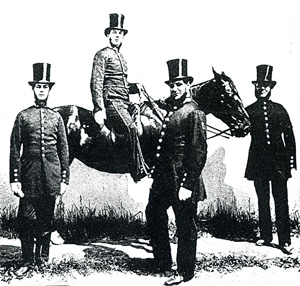 Peelers putting on their top hats, 1829:
Peelers putting on their top hats, 1829:
the aristocratination of the proletariat or the proletarianisation of the aristocracy?
The Metropolitan Police Act of 1829 established the “Bobbies” in the capital (although the first London police were the river police towards the end of the 18th century – nicking dockers for “perks” taken from the ships to compensate for the enormous delay in wages, wages which were often never even paid: many of these dockers were subsequently hanged).
But the police still hadn’t managed to find any legitimacy on the part of most of the working class. The following is an example of this failure on the part of the State. On 13 May 1833 at the Calthorpe Estate, Cold Bath Fields, Clerkenwell, Grays Inn Road, a meeting was held to protest the pathetic nature of the 1832 Great Rreform Act. Lord Melbourne, the Home Secretary, had declared the meeting illegal. By midday on 13 May approximately 300 people had assembled for the meeting. A heavy detachment of police was detailed to the area. A correspondent for The Times described what happened next: “The police furiously attacked the multitude with their staves, felling every person indiscriminately before them; even the females did not escape the blows from their batons – men and boys were lying in every direction weltering in their blood and calling for mercy.” Two cops, Sergeant John Brooks and PC Redwood, were stabbed trying to wrest a flag from one of the demonstrators. No-one saw what happened to a third, PC Culley, but he staggered into a local pub with blood pouring from a wound in his chest, and died a few moments later. The coroner’s jury that examined the death of Culley returned a verdict of ‘justifiable homicide’. The jury justified its verdict on the grounds that the crowd had not been ordered to disperse under the terms of the Riot Act, and that the ‘conduct of the police was ferocious, brutal, and unprovoked by the people’. A few days after the jury returned its verdict, a package arrived at the home of the jury foreman, Samuel Stockton. An anonymous donor had struck a number of pewter-type 1¾ inch medallions for Stockton, with instructions for him to pass them on to his fellow jurors. One side of the medallion contained the names of the jurors, with the message: ‘We shall be recompensed, the resurrection of the just’. The reverse was inscribed: ‘In honour of the men who nobly withstood the dictation of the coroner; independent, and conscientious, discharge of their duty; promoted a continued reliance upon the laws under the protection of a British jury’. George Fursey, the man charged with stabbing Brooks and Rewood was acquitted by an Old Bailey jury. On 8 July 1833, crowds thronged the streets at Blackfriars to cheer the coroner’s jurors who had returned the verdict of ‘justifiable homicide’. A trip was arranged by a group of City men with radical persuasions, the Milton Street Committee, for the jurors and their families to sail the Thames up to Twickenham on the steamer Endeavour. It poured with rain throughout the day, but crowds still flocked to the banks of the Thames to cheer on the jurors on their trip upstream. As the ship sailed to moor at Twickenham, canon fire saluted the arrival. The significance of the juror’s verdict was remembered long after. A banquet was thrown to honour the anniversary of the jurors’ findings.
Despite resistance like this, the ruling class, bit by bit, were compelled to advance its project to police the dispossessed. In response to the first Chartist agitation, the 1839 County Police Act was enacted allowing the formation of regional police forces. The fear of disorder from demobilised soldiers returning from the Crimean War led to the 1856 County and Borough Act which established police forces across the whole of the country. This period during the mid-19th century represents British capitalism maturing from the more brutal primitive accumulation of capital into a settled capitalist democracy. Central to this process was the development of the rule of law as the primary method of enforcing order. Legally regulated state violence was replacing naked class terror. The police force was founded on the principle of “citizens in uniform”. In other words, they were supposedly bound by the same laws as anyone else. They were also made structurally independent from the control of either politicians or individual members of the ruling class 6. So they were bound by law in a manner unlike that of the yeomanry or other military forces, whose authority came directly from the Crown and the socio-economic power exercised in localities by the landed gentry and aristocracy. The establishment of the police was part of a move away from a form of class rule which saw little separation between economic and juridical power. Hence you have the development of a separation of “Law” and “Order”. And the police became legitimised as “embodiments of impersonal, rational authority” (Reiner, “The Politics of the Police”).
One could say that the police were seen less and less as a force for the rulers’ property and power the more the working class achieved genuine reforms (though at the price of increasing social control and the acceptance of a greater hierarchical mentality within the working class towards different sections of the class). As sections of it, particularly sections of the skilled working class, were increasingly integrated into class society, so the cops were less and less seen as something imposed on them by an alien state. Nevertheless, the attitude towards the cops, even when they were clearly proletarianised at least in terms of appallingly crappy wages and conditions (see “The 1919 Police Strike” on this site), was at the very least very ambivalent, at least until the post World War ll period, when, with the manipulative propaganda of the war being carried over into peacetime, increasing numbers of the traditional working class tended to see the cops as somehow necessary. Whilst “All Coppers Are Bastards”/ACAB remained a popular proletarian expression, they were increasingly seen as a necessary evil.
Evenin’ all
In the past, in the post World War ll period, the attempts to gain policing by consent were fairly crude compared with nowadays. Much of it depended on presenting the cops, particularly via the TV, as protective nice guys – most obviously exemplified by the paternalistic “Dixon of Dock Green” image. The avuncular illusion of the firm-but-fair cop on the beat, low in the hierarchy, slight cockney accent and apparently working class was an ideology that hid the viciousness of the UK filth from the 1950s to the mid-70s, and manipulated the consciousness of those who never came into contact with the cops except to ask them directions. Whilst nowadays reports of cop callousness, lies, racism and brutality abound, that was very very rarely the case when the “good cop” Dixon image prevailed.
What is hardly known is the fact that Ted Willis, the creator of the pro-underdog Dixon, was a leftist who’d been in the Young Communist League and had been significantly helped in his career by literary agents in the Communist Party (he became a baron in ’63, put forward by the Labour Party). Ironic then that pro-State “Communists” and “socialists”, the most effective policers of proletarian subversion of the 20th century, their policing functioning all the better for seeming to be on the side of the proletariat, should nowadays be superceded by an apparently “anti-state” communist, John Drury, also helping the cops reform their image (and worse) whilst claiming to be on the side of the proletariat.
The unquestioning faith in the word of honest coppers promoted by the Dixon image allowed them to get away with murder.
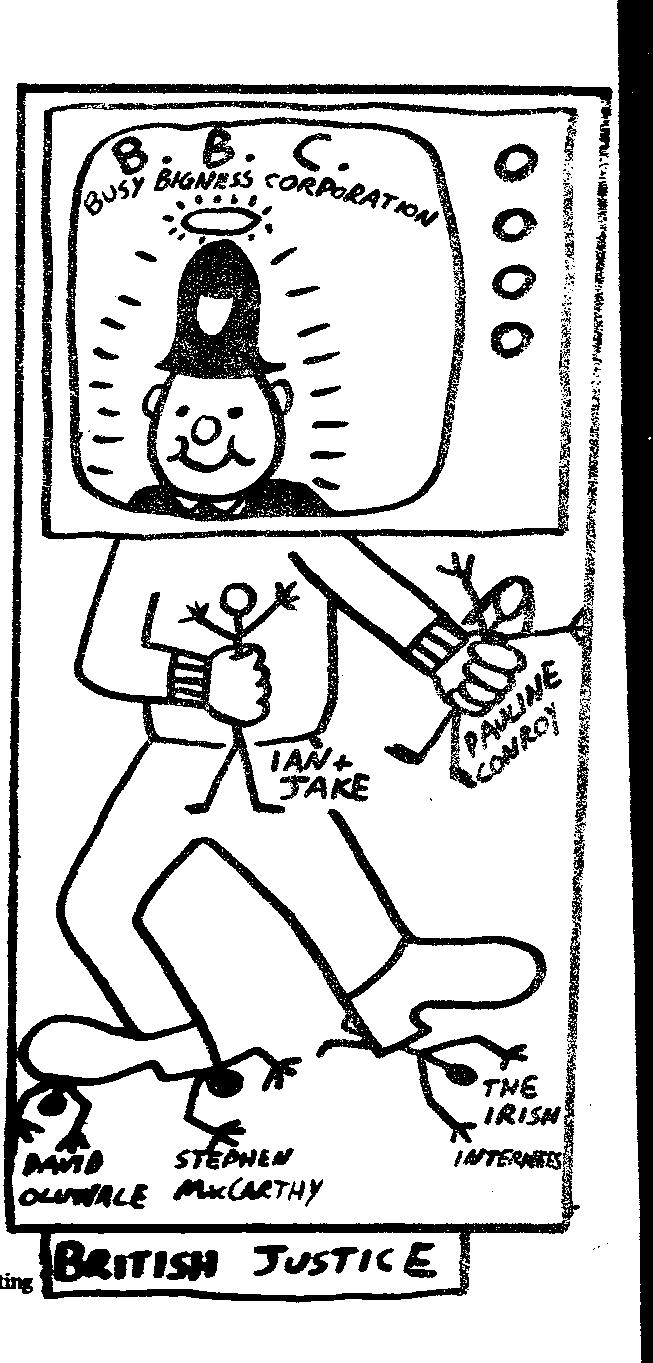
Cartoon. 19715b
In all this, the leftist-inspired Dixon of Dock Green, as do more sophisiticated cop series in the present, helped to brainwash people so as to blind them to what was going on. So inculcated were people with the idea of the nice British Bobby, unarmed and always doing right, that, largely up until Thatcher, the ’81 riots and the ’84 miners’ strike, it was always assumed by spectators that only wrong ‘uns were, rightly, deserving of anything the cops doled out to them. Many still do. However, modern cop shows often present the cops as more obviously ambiguous than the archaic “nice guy” representation of Dixon, because anything as superficial as what seemed to take in naïve spectators in the 50s, 60s and early 70s would now be laughed at by today’s sophisticated cynical spectator and so proven ineffective as a method of manipulation. Today’s cop series more often present the cops as the better of two evils – sometimes “bad” but never as bad as the bad guys.
Far From The Madding Crowd Controllers
State terror often induces a pacifying reformist timidity on the part of innumerable proletarians even as they complain about it. Often less courageous proletarians want to avoid recognising their submission to fear, to the objectively imposed reasons for fear, and do so partly by blaming and/or attacking the more combatative proletarians amongst them. As it becomes obvious that the state will face more and more opposition (both genuinely subversive and essentially not much more than merely moaning about it all) to its intensification of an even more divided and repressive class society, it will have to induce those who think of themselves as “deserving citizens” – those who consider themselves morally superior and still want to be part of this society – to police (this time, unpaid) the “undeserving proletarians” in their midst. And certainly not just in the UK. If capitalism survives the next decade or three, it will rule with an unsurpassed mix of brutality and sophisticated pacification. We know the brutality of the filth, but what about the current development of its “Soft Cop” methods?
On the 24th April 2009, the cop journal Janes Police Review published an article called “Chaos Theory“7 (co-authored by Aufheben‘s John Drury) designed to advise cops on better “divide and rule” policing after the famous G20 demonstrations in which a cop killed Ian Tomlinson. The following is some of it:
“The graded tactical model that grew from this strategy began with officers in normal uniform. Riot police were on hand, but were deliberately kept out of sight. Frontline offiers were then embedded within crowds (even during events categorised as high risk), working in pairs, interacting and encouraging legitimate behaviour. As a result, police offiers were able to gather information and constantly monitor for and then react quickly to emergent risk. By using modern crowd theory and principles in this way, the police were able to avoid indiscriminate interventions against large crowds, although they still maintained this as a tactical option. What was also evident was that in this context of perceived police legitimacy, fans began to ‘self-police’ by actively undermining those trying to initiate trouble or at the very least making it easier for the police to deal with them. But, most importantly of all, there was an almost total absence of disorder.”
Recently, in June 2012, some aspects of this strategy were put into effect:
“Protesters have complained about a new breed of police officer being sent to demonstrations to talk to people. Smash EDO’s march in opposition to a possible war with Iran passed peacefully yesterday (June 4) with about 100 people walking from North Street, Brighton, to Hove Town Hall. But many protesters complained that police “protest liaison” officers – used throughout the weekend to allow organisers to discuss plans as events unfolded – were intrusive. The officers marched among the demonstrators at the Smash EDO event. But when protesters gathered in North Street they were addressed by a speaker who told them the officers were not welcome. Anarchists, with their faces covered, used umbrellas to try to block the officers’ views, and argued with their own legal advisers over how to get rid of them. Long-time Smash EDO supporter Glenn Williams said: “They are mingling in with the crowd. People have been objecting to that, and that has been the only source of conflict.” –
“At the end of an anti-war march in Brighton a group of marchers surround a man in a blue bib labelled ‘Observer’.
‘You work for the police.’ They accuse him.
The man rolls his eyes contemptuously, ‘I do not work for the police, I am an academic.’
‘So what are you doing here then?’
‘I am observing.’
‘Observing for the police.’
‘No, I am an academic, I work for Liverpool University.’
‘So what do you do with your observations?’
‘They are used to help train people in crowd control.’
‘So you sell them? Who to? Can we have them?’
A look of disgust crosses his face. ‘No you cannot.’ He sneers and shakes his head.
The questioning continues and the academic’s sense of irritation boils closer and closer to the surface, his answers get more sarcastic. ‘So you sell them to the police – you work for the police’. Finally an eruption from the academic: ‘Yes I work for the police… You all want to cause trouble,’ he waves an arm in a semicircle that encompasses the mass of gathered protesters, ‘you believe that the police represent the state, and that you can bring down the state by fighting them.’
So who is the academic, and where does his contempt for protesters come from?
A little while later Sussex Police announced that it had started a new policing initiative, especially for protests. Police liaison teams were to be clad in high visability jackets, as they had been at the anti-war march.” This was to be a new friendly face for policing at these events,Sussexpolice announced, and the academic, Dr Clifford Stott was the consultant helping them mastermind the new plan.” – http://fromoutsidethewhale.wordpress.com/2012/06/27/crowded-out/
“Sussex police have recently started to use new forms of repressive tactics for policing demonstrations. They seem to have taken a break from head cracking to trial what they have termed ‘Police Liaison Officers’ or PLOs at the recent Smash EDO demonstration on June 4th. This may not be simply a new fad by the cops, but could be part of a new era of repression based on the relatively new ‘science’ of crowd psychology. The PLOs are the brainchild of Dr. Clifford Stott, a crowd psychologist working with the cops to ‘manage’ crowds. This man was seen at the Smash EDO demo wearing a blue observer vest, presumably to check up on his PLOs he’d just trained.
He tweeted this last week just before the Smash EDO demo:
“A brilliant few days creating PLTs in Sussex. A long way to go but a rubicon has been crossed. Helping secure ECHR based approaches!…”
The Sussex Police PLOs are predominately female, and use a nicey-nicey approach to try and create the illusion that they are the “good” people and on our side. On top of this, Graham Bartlett, the local police chief has “praised” Smash EDO for their good behaviour…….After the riots it seems the police are finding new and invidious ways to keep us in our place, which is leading to a new form of policing where police are integrated into the crowd, not as undercovers, as they have been previously, but as part of it. Crowd psychology, if it takes off, may result in a form of repression which is more dangerous to social movements than water cannon or rubber bullets, as it creates a situation where the public become more sympathetic to the police than to those facing repression. On top of that, PLOs suck the energy and solidarity away from the people on the streets. What is clear is we need to make sure we do not allow our demonstrations to be infiltrated by the police in this way and we make sure they are not welcome. Once we allow them to be part of our demos in this way we have already lost, as it will be the cops and not us calling the shots.
The use of this new tactic shows us the cops are out of their depth and cannot deal with the new wave of social unrest sweeping the UK in recent years. To beat them at their game we have to stay one step ahead of them by understanding these tactics and what they mean for us before they are truly put to use.” – http://www.fitwatch.org.uk/2012/06/11/sussex-police-unleash-new-weapon-crowd-psychology/
It should be pointed out that these tactics had already been used in the demonstrations against the cuts in London in March 2012, though without the least opposition fom the demonstrators. See: http://www.demotix.com/news/1104889/protest-liaison-teams-deployed-london-first-time#slide-1
Killing Us Softly With Their Siren Song:
the UK, South Africa, Bangladesh, France, Greece, the USA…
When “Chaos Theory” was made public to the anglophone anarchist/libertarian communist/ultra-leftist milieu a year ago, there were, amongst its more deceitful sections, innumerable attempts to minimise the implications of these new forms of policing. The Libcom/Aufheben8 defence team claimed that the strategy (which Drury had clearly been central in formulating as part of the Reicher/Stott team) was merely reformist (humanisticly designed to reduce cop violence) and not useful for the cops. It was as if this report of their strategy in practice had nothing innovative for the state. Sure, when things hot up soft cop strategies are put aside, but it’s obvious to anybody but the wilfully self-deceitful that soft cop strategies are used to try to minimise the possiblity of things hotting up. Moreover, the Aufheben defence team claimed that cops were cops and that in the heat of class conflict were uninfluenced by research-based theories for which the state paid good money; as if cops on the ground always acted in a manner which their more intellectually sussed officers could not determine, as if cops have always been the same and are so intrinsically thick that they are incapable of developing from the history of their own mistakes. Whilst this may well be true for the “ordinary coppers”, it’s obviously not true for those developing policing policy and for those who give the rank and file their orders and training. So patently obvious that it’s also obvious that this was merely one of the many attempts to fob the whole affair off as irrelevant.
The following comes from “Knowledge-based policing…” (pubd. 2007), co-authored by the “communist” John Drury, an article he denies contributing to but which, for several years, was part of a list of texts he claimed to have authored on his website for his University:
“We were asked by the Metropolitan Police to consider how to develop the corralling tactic (Cronin, 2002; Cronin and Reicher, 2002).
We stressed, first, the need for officers to understand the meaning of their tactic from the perspective of the participants. In particular, the anger of participants should not be dismissed simply as reflecting a prior hostility to the police. Rather, officers need to consider how they might be producing hostility in those who started off being sympathetic towards them. Next, we stressed that, if crowd members had to be contained out of fear that some amongst them might be violent, it was critical to communicate to the people as to why they were being contained and how this was necessitated by minority actions. Part of this may involve the development of new communications technologies such as high-powered mobile loudspeaker systems and giant LCD screens. Third, procedures of selective filtering should be developed for enabling those with specific needs to exit the containment area—and this should also be communicated to the crowd. Moreover, it should also be stressed that conflict within the containment area would disrupt the selective filtering process and hence act against the interests of crowd members. Fourth, once those in need had been allowed to leave, it should be stressed to the remaining crowd that the police also wish to let them proceed as well, but that this could only occur under conditions that will prevent some amongst them from causing violence. These conditions might include the removal of clothing that obscures individual identity, abandoning placards, bottles and other objects that could be used as weapons. This advice has been taken on board by the Metropolitan police and we are told through personal communication that it has been applied on a number of occasions to considerable effect.”
This was the policy, used for the first time systematically in the UK, applied to the Mayday 2001 demonstration. This use of “kettling” was a policy which Aufheben described as “politically irrelevant”.9
But even worse was Libcom/Aufheben‘s claim that JD’s work for the CBRN (Chemical, biological, radiological, and nuclear) emergencies was “humane”, and that state management of emergencies was neutral. Is this humane? Is it neutral?:
Humane screens at Occupy St Pauls
http://dan-hancox.blogspot.com/2011/12/kettling-20-olympic-state-of-exception.html?m=1cf0i
“The portable steel cordons were designed to be used not for public order situations like political protests, but for dealing with CBRN incidents, “where they can obviously very effectively direct the crowd”. 200 of them were purchased by the Home Office in 2008 for CBRN preparedness, but they’re now available for any police force in the country to use, for any purpose at all.”10
Humanism: the art of putting lipstick on a monster and getting him to look all dewy eyed, dressing him up in soft hued clothes of compassion; the art of making one’s own defence of such inhumanity appear humane.
“Society’s owners indeed want to keep a certain ‘social relation between people’, but they must also maintain continual technological innovation… When an instrument has been perfected it must be used, and its use will reinforce the very conditions that favour this use. Thus it is that emergency procedures become standard procedures.” (Thesis XXIX, Comments on Society of the Spectacle, Guy Debord ).
This was completely lost on those Libcom/Aufhebeners who scornfully dismissed the observation of the presence of police CBRN crews at demos in London in 2011 (with their use of LED screens to issue instructions, and mobile barriers to funnel marchers), accusing us of clutching at straws, blissfully unaware of the straws that they themselves were being carried on.
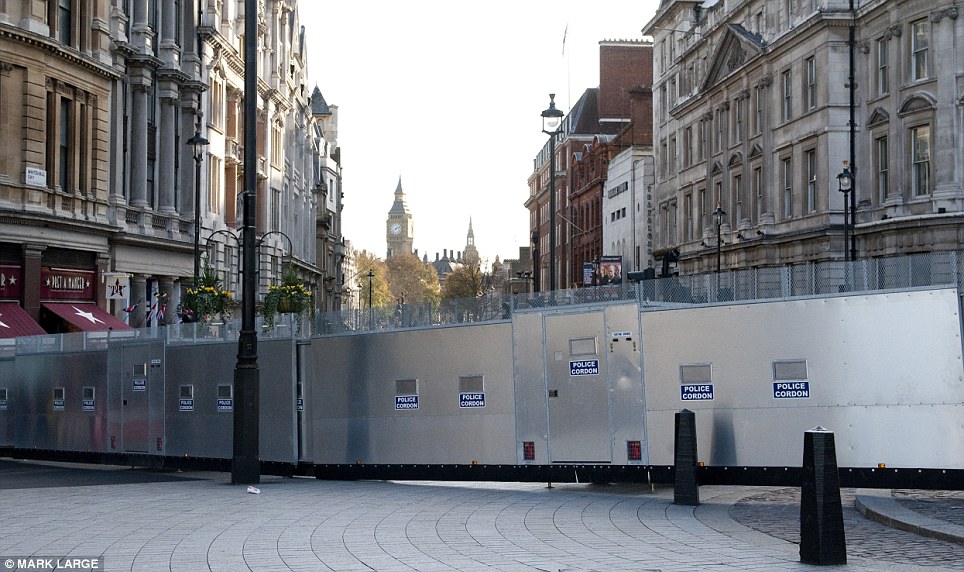 the screens in your head guarantee the screens on the street
the screens in your head guarantee the screens on the street
In an email discussion list on this subject, Otto Geyrtonnex wrote: “Aufheben writes that “’blue light services’ work closely together” to a humaniarian and non-repressive end. For them, it would seem that their comrade works for a certain service concerned with crowd management during major incidents…and that being in this line of work “means probably talking to cops ”. For them this type of activity has nothing in common with maintaining bourgeois order against proletarians’ offensives. We have to be cautious when faced with these so called distinctions which only exist in the conscience of the leftist. For the State a catastrophe is a catastrophe. It is a moment of rupture with consensus, with social peace, whether it be for one reason or another. For the State it is clear that the primary objective is to get things back to normal as quickly as possible. In the towns around nuclear power plants the State organises mock evacuation and emergency procedures claiming that this will help people to be prepared in case of a nuclear accident. In health terms these exercises are of no benefit to anyone. But they are however a great opportunity for the cops to learn precious lessons about crowd management. The Katrina catastrophe did not dull the cops’ sense of responsibility as they beat up looters and protected stores. In this regards rioters who throw rocks at firemen and burn down schools are by no means mistaken. It is an illusion to believe that there is a nice cop who helps children to cross the street on the way to school and another villainous corrupt cop who spends his days raping prostitutes and shooting demonstrators. These deeply ideological borders are porous.”
Nowadays the difference between “the emergency services” and the cops are largely spurious. For example, in Cape Town, South Africa, some significant proletarian protests round the time of the Marikana massacre, were partly dealt with by the city’s disaster management spokesman.11
And “Health and Safety” is always a pretext to attack social movements (Occupy in Oakland is an obvious example12).
Against the oh-so-convenient pretence of all those who parroted the “correct line” of Aufheben claiming the irrelevance of the influence of Drury and his crowd psychology team’s suggestions vis a vis the actual practice of the cops, it is obvious to anyone with a minimal critical lucidity that ideology has a miserable consequence regardless of such deluded denials and self-justifications. And far more debilitating for social movements than any proletarian’s production of a car or whatever.
Take, for example, the policing of the Bangladeshi garment workers’ struggles: “Whereas it would previously be the norm for striking workers to leave the factory and then quickly march to neighbouring workplaces to picket them out, the IP [Industrial Police] are now more often forewarned of trouble via intelligence reports and so can quickly deploy to isolate protests – if necessary, augmented by other police departments and presumably using a form of what we know in the UK as ‘kettling’ to contain workers’ demonstrations. They can then play their mediating and counselling role to encourage negotiation and resolution of disputes between bosses and workers in individual workplaces. (Crowd psychology techniques appear to be an increasingly routine weapon in the arsenals of police forces of the world.) And so the garment workers’ long tradition of picketing out nearby workplaces – a practical application of the class-wide solidarity of “an injury to one is an injury to all” – is, for the moment at least, broken. The practical common identity as a class, above and beyond identification or loyalty with a particular workplace, is suppressed. The paramilitary/counselling IPF unites the carrot and stick approach; in the absence of functioning trade unions on the job (which bosses still refuse to allow) the IP takes a surrogate role, playing a role normally reserved for unions; the mediating of conflicts between exploiter and exploited.” (“The policeman’s new clothes…“)”13
And as Otto Geyrtonnex wrote: “During the movement against pension reform in France the cops applied certain methods which were qualitatively very different from those which had been used in the past. No more police lines encircling everyone. No more threatening legions of cops. No more tear gas bombs emptying public squares. Instead we saw a few plainclothes cops discreetly moving among the demonstrators, arrests which were as singled out as possible, small cans of tear gas which the cops used to spray the eyes of the rare undisciplined proletarians in such a way that it wouldn’t hurt those standing near him. In this way the demonstration took place, expressing its democratic right with no outbursts whatsoever. Ten minutes after the end of the demonstration had been called ( stipulated in the negociations with the prefect) the public square was clean and empty. It’s certainly efficient.”
Although 99% of the time, the brutaity of austerity in Greece means that Greek cops are usually very brutal, they do occasionally resort to Druryesque soft cop tactics. Though the following is more an attempt at ideological consolation for those frightened by the violence of both cops and rioters, it could still be used practically in certain circumstances in the future, just as occasionally it has been used in Greece in the past:
“It is obvious that attempts are being made at readapting the doctrine of the security forces’ involvement in social reactions, which will escalate continuously. A society that suffers badly from economic measures cannot be beaten up by the forces of repression which have not found or do not want to find a way to isolate those who regard violence as an end in itself. The events of recent days, if not marked by the death of the 53-year-old PAME trade unionist, could be seen as a sign of an effective change in police doctrine towards a softer management of demonstrations.
Indeed, in those two days that police were fully in a transitory phase in terms of its leadership team, the risk was double. Initially, the apparatus was led for two days by those available since changes in leadership were announced simultaneously with the big demonstrations. And even with the participation of Christofareizis C., who was recalled from retirement, the designer of the MAT [TN: the riot squad] in the ’90s, whose name was associated with the attack against pensioners out of Maximou [TN: the Presidential Mansion] in 1995. The other change observed was the return of the doctrine of self-control and inconspicuous granting of power to organized unions to self-guard the demonstrations…. What happened on Thursday with PAME guarding its demo not only in a defensive but also in an offensive way at the Unknown Soldier monument was the beginning of a new tactic which gives room for self-regulation to the demonstrators that will have the first say in the prevention of the intrusion of troublemakers in the body of the mobilizations. And this is risky, because the incredible violence between protesters, while the police were discreetly absent, could have had more serious consequences. Although any police involvement might have had even worse consequences. In any case this tactic is likely to be applied again after consultations have been made. In this critical period it was clear that Chr. Papoutsis [TN: Minister of Public Order, or in the neo-orwellian language of the PASOK government, Minister of Citizen Protection] wished for a softer administration at all levels of the Staff and not only at the leadership. That is why he transfered hardline officers that he thought were damaging the image of the police due to the behaviour of policemen who had seriously injured protesters and professional journalists in recent months, during demonstrations. Obviously, for reasons of balance, the minister also hired an experienced veteran and put him in the position of operations consultant.
For over a year, the minister has been talking about a lack of democracy in the security forces and has threatened that he will not hesitate to attack some structures, units and commanders. Certainly these commanders were appointed by the same government two years ago, when the offensive doctrine was applied for the regaining of the streets, according to the official announcement that was made then.
The murder of student Al. Grigoropoulos had repercussions on the police as they were delegitimised in huge parts of society, i.e. they were marginalized socially and professionally. There is an attempt now by the Ministry of Citizen Protection to reverse this disturbance of professional self-image and behaviour, in the worst period in decades, as the economic crisis is ruining people and cracks in social cohesion are increasing.” [TN: It is not surprising then that some riot squads were telling the demonstrators that they were there for their protection!]”
(“Greek Police: softly-softly is the new doctrine”, Eleftherotypia, 23/10/2011) 14 (Eleftherotypia is a liberal newspaper of wide circulation).
During the often violent Oakland Occupy movement against the brutality of the cops and the society they protect, there was a moment where cops mingled amongst the camp and chatted in a friendly manner, almost unprecedented behaviour for US cops. And after the brutality of the cops, the town hall felt obliged to discipline some of them in order to maintain an image of fairness and to show to those occupiers who defined themselves as “citizens” that the local state could listen to them.
The text “Lost in the Fog: Dead Ends and Potentials of the Occupy Movement”15says:
“The former Seattle chief of police, Norm Stamper, in an interview following the most recent brutal incident of police repression in Seattle, articulated the insidious strategy that police agencies across the country should be employing against Occupy demonstrations:
“If the police and the community in a democratic society are really working hard – and it is hard work – to forge authentic partnerships rather than this unilateral, paramilitary response to these demonstrations, that the relationship itself serves as a shock absorber. Picture police officers helping to protect the demonstrators. Picture demonstrators saying, “We see people on the fringes, for example, who are essentially undemocratic in their tactics. And so, we need to work together to resolve that issue.”
The triumph of American policing is this partnership that Stamper eludes to. Programs devoted to the furtherance of identification with authority are the most effective way that the policing apparatus functions, at once reducing the material role of the police in society and more than doubling its unpaid workforce. In United States society, even the staunchest of good citizens holds the belief in “freedom of speech” as a practically sacred right.
A brutal or violent suppression of a protest movement that has mostly agreed to play by the rules could cause a crisis of legitimacy for the American state and cause the demonstrations to increase rapidly in size and intensity…..For this and other reasons, a far more likely outcome, and a more efficient avenue for the state, is the violent suppression of any uncontrollable elements of the movement combined with the seamless recuperation of its more digestible elements”.
People reading this might remember how the cops in Madison initially supported the occupation of the state capitol and the aims of the protesters, a couple having banners saying “Cops for Labour”. But at the end they did their job of expelling the occupiers, and doing so with very little resistance. This soft cop stance was part of the cops’ training, having previously been led by former Madison chief of police, Couper, who wrote in October 2011: “Earlier this year in Madison, we saw restraint and common-sense used by the Madison police who, interestingly, set the tone during the occupation of our state capitol building. What we learned together all those years has not been forgotten.”
In the same article he says, “The method I developed over forty years ago is still effective as the British police recently found out through the research of Dr. Clifford Stott. In short, restraint works better than aggression. This is part of what I wrote in my book.
“One of the most important things police do is ‘handle’ people in crowds. In the long run, a professional police will ultimately be judged by how well they do this―that is, by how they do it fairly and effectively, without regard to whether they agree with the people in those crowds or not…. the primary function of police is relational, whether they are responding to a domestic dispute, investigating a crime, enforcing a traffic regulation, helping an elderly person cross a busy street, or handling a crowd. Once this is understood, it is a lot easier to figure out what it is police need to do and how they should do it…More recently, the British Home Office has also been concerned about contemporary behaviors of their passionate football (soccer) crowds… and the confrontations that frequently occur today between those crowds and police. Commendably, they consulted academia and found a social psychologist who was studying crowd behavior. Dr. Clifford Stott, one of Europe’s leading researchers regarding such behavior. Stott advocates a different approach for police to use when handling crowds. His studies found that: “’[L]arge-scale disorder tended to emerge and escalate because indiscriminate, heavy-handed policing generated a group mentality among large numbers of fans that was based on shared perceptions that the police action was illegitimate. This had the effect of drawing ordinary fans into conflict with the police’….The finding here is that when a crowd perceives the police as overreacting or being heavy-handed, crowd members have a tendency to stop observing and start taking action. To prevent this from happening, Stott advocates using what he calls a ‘softly, softly’ approach―a low-key approach in which officers mix with and relate to crowd members on the basis of their behavior, rather than their reputation. If police approach a crowd with the expectation that its members are going to make trouble, it often turns out that way. This will not be unfamiliar to Madison residents or their police.”16 This text also gives a positive mention to JD’s “The Crowd” blog17. “Cops For Labor” meet “Cops for communism”. For obvious reasons, Libcon/Aufheben are conveniently and wilfully blind to this obvious double edged sword pushed for by Drury’s team, with his mate Stott as its foremost advocate, presenting it as reformisticly harmless.
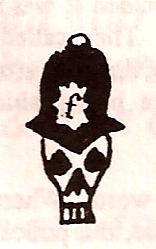
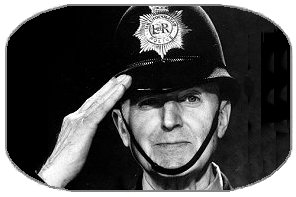

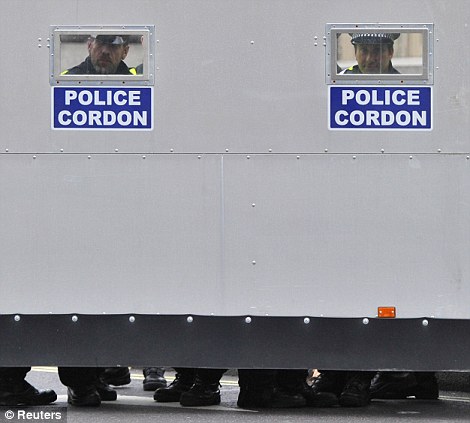

Leave a Reply